2022
NASA spending, planned vs. actual, in 2022 dollars
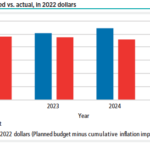
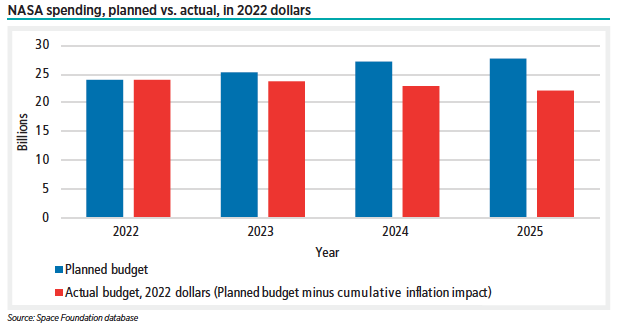
Faced with a budget capped at 2023 levels, NASA is striving to save its lunar ambitions, laying off employees and cutting programs in favor of the Moon.
Midyear launches by select nations, 2014-2024
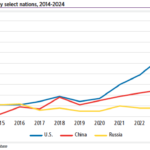
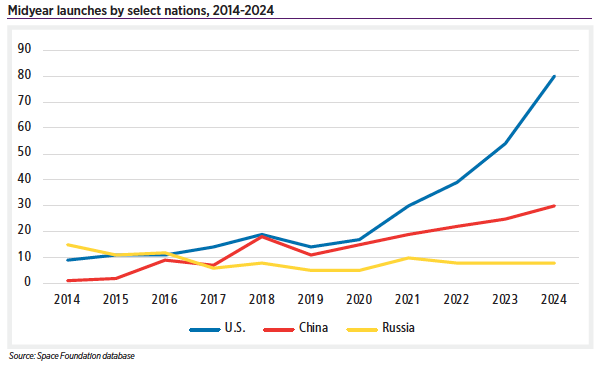
China led its global rivals with seven military launches, one more than the United States. China’s launches included fielding a new series of high-resolution spy satellites, according to state-controlled media.8 Russia and Japan each launched two military missions, while North Korea and Japan had a single mission each. The United States led the world in civil government space launches of the first half of the year, with a dozen launches.
Midyear launch trends, 2014-2024
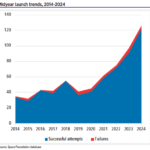
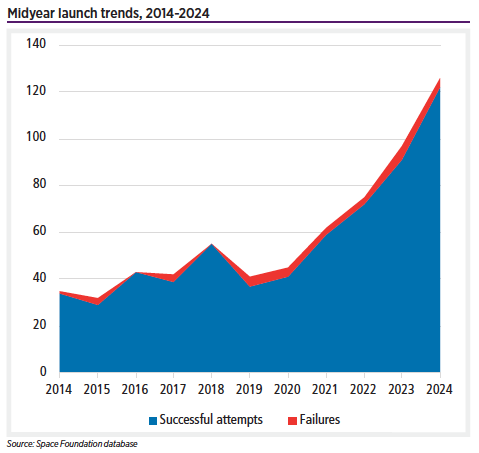
Global launches through June 30 were up nearly 30% from 2023, easily eclipsing last year’s record 97 first half launches with 126. Launch failures also fell in the first half of 2024 despite the higher launch activity.
Satellite and space M&A transactions, Q4 2021-Q2 2024
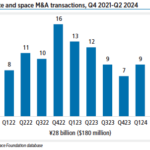
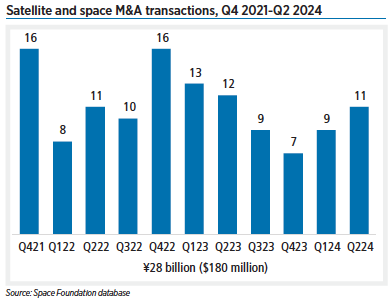
Space sector merger and acquisition activity was up, with 11 announced transactions during Q2 versus nine during Q1 and seven in the final quarter of 2023.
Estimated spending for NASA and U.S. defense, 2005-2025
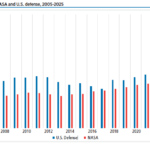
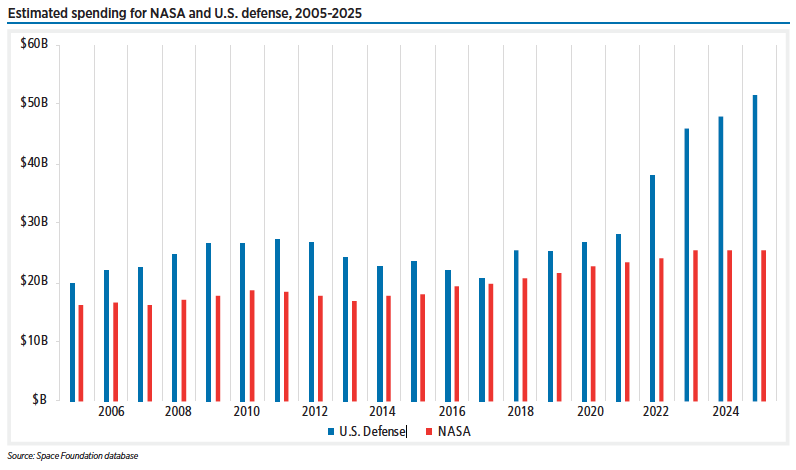
The Pentagon made up more than a third of global defense spending, with $851 billion in 2024, including a record $30 billion for the Space Force.
Space Force, NASA spending, 2020-2025
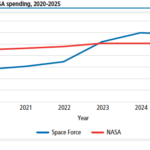
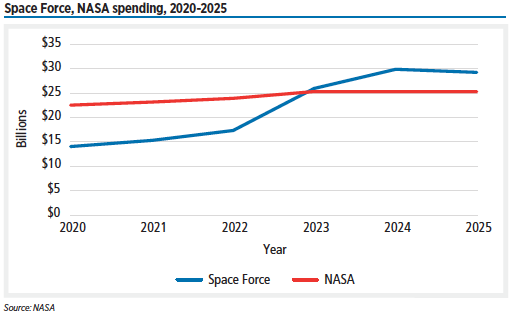
With record 2023 Pentagon space budgets, including $30 billion for the Space Force, the United States remained the globe’s top military spender, topping the combined total of the next nine nations.
Non-NASA U.S. civil space spending by agency, 2022-2025
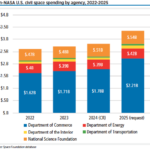
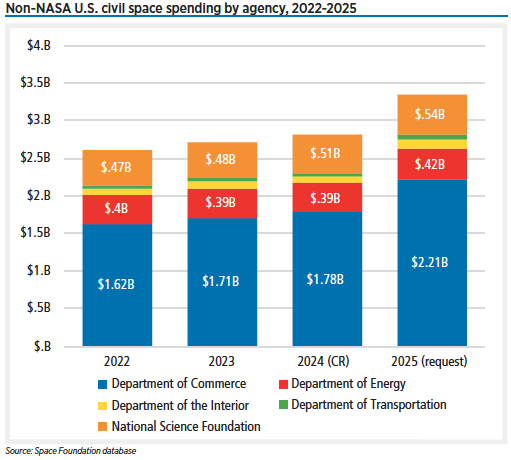
U.S. civil space spending totaled $28 billion in 2023, 5.4% higher than 2022. NASA’s budget is the majority (90%) of this spending. The Department of Commerce has the next highest spending with $1.7 billion, followed by the National Science Foundation ($482 million) and the Department of Energy ($388 million).
Civil space spending in Latin America (USD), 2022-2024
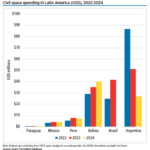
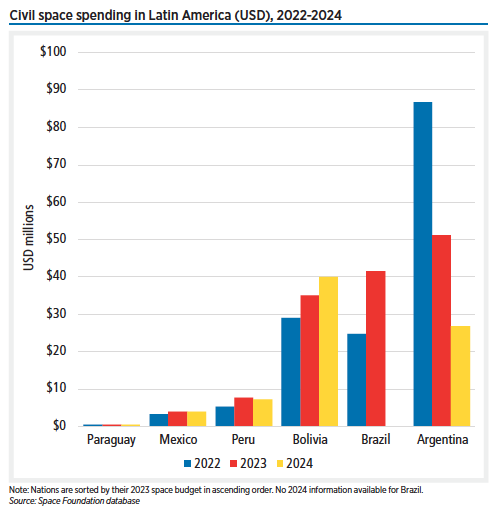
Like Africa, Latin America has a budding presence in the space economy, and six nations in the region had space budgets available for this analysis.
Canadian Space Agency spending, FY2021-FY2026
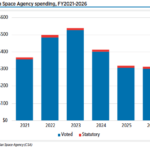
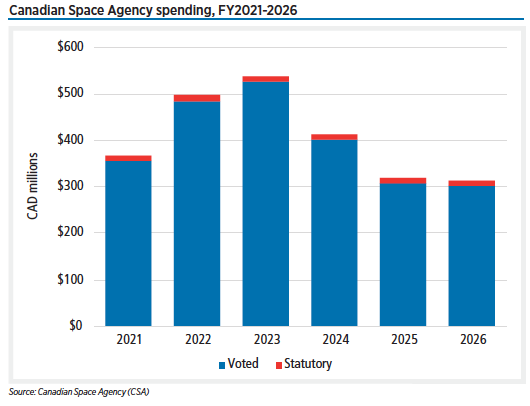
Canada also is increasing its international cooperation beyond ESA programs. The nation hosted 25 Artemis Accords signatories in May for a workshop on sustainability and safety principles in space exploration.
Civil space spending in Africa (USD), 2022-2024
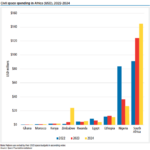
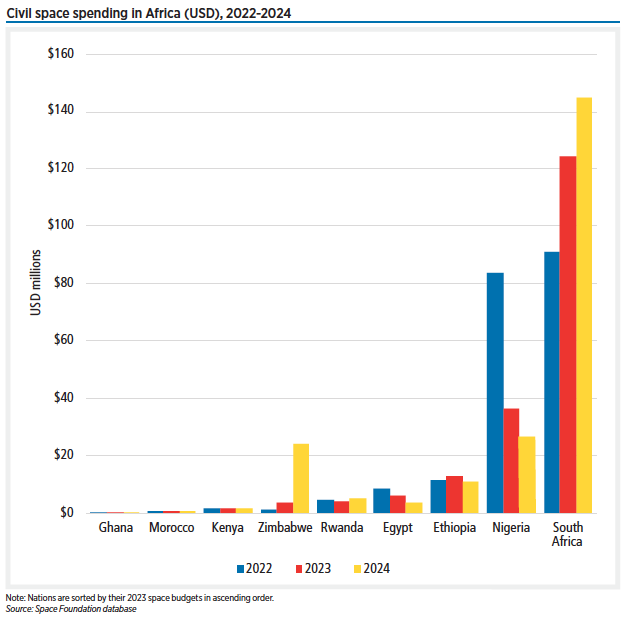
Nine African nations have preliminary budget data available for 2024. As in 2023, seven nations in the region maintained or increased spending, while Egypt and Ethiopia decreased space budgets.